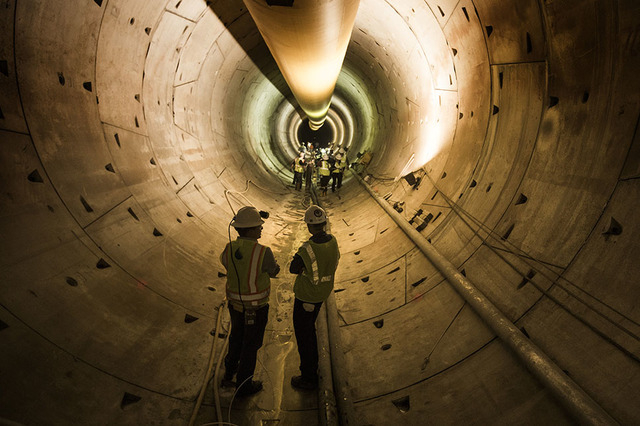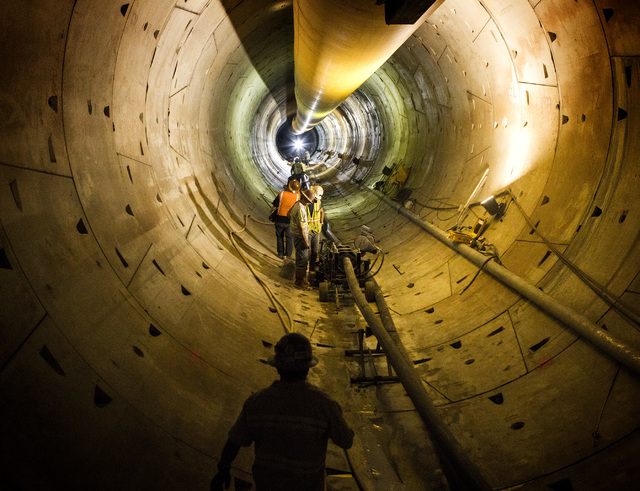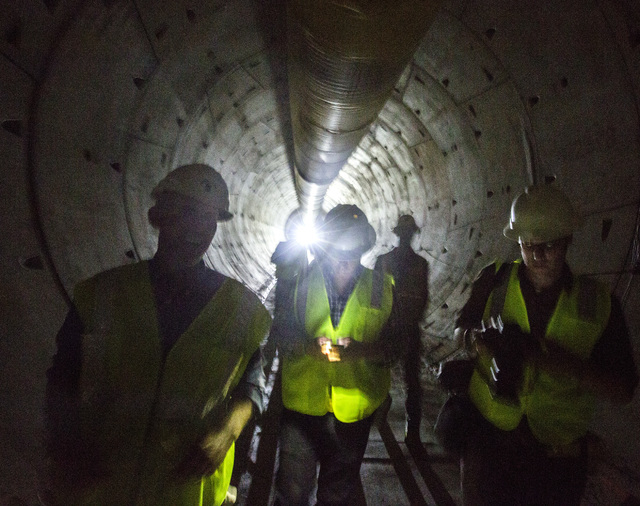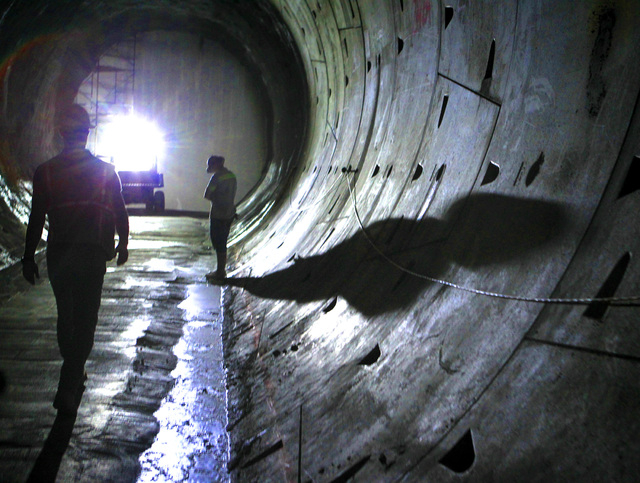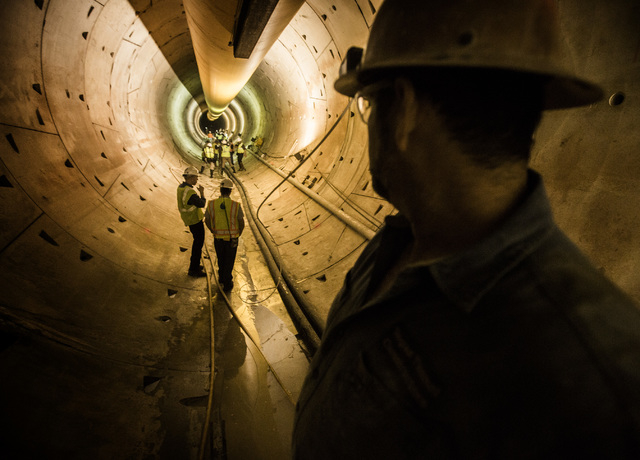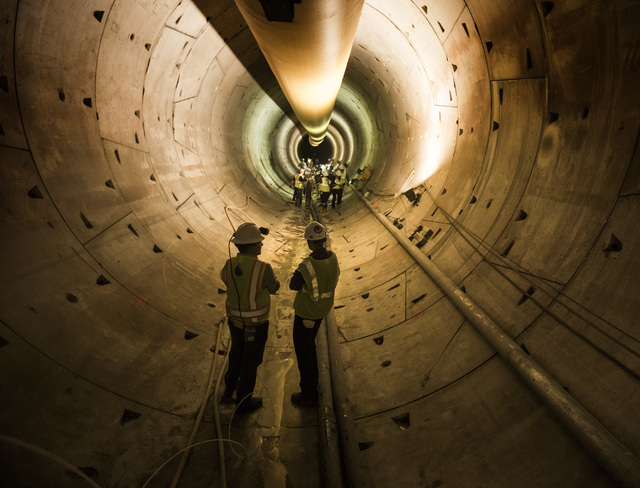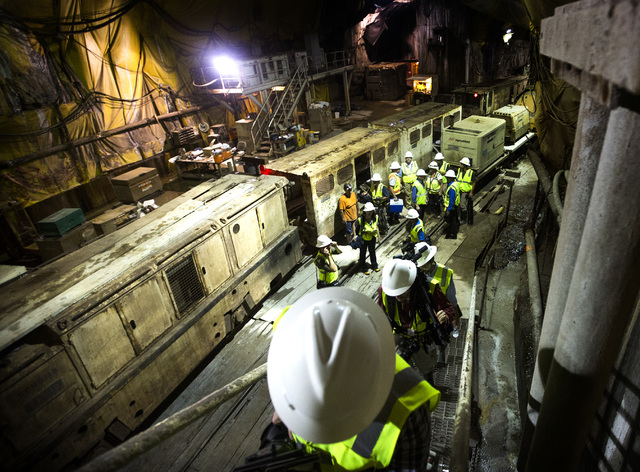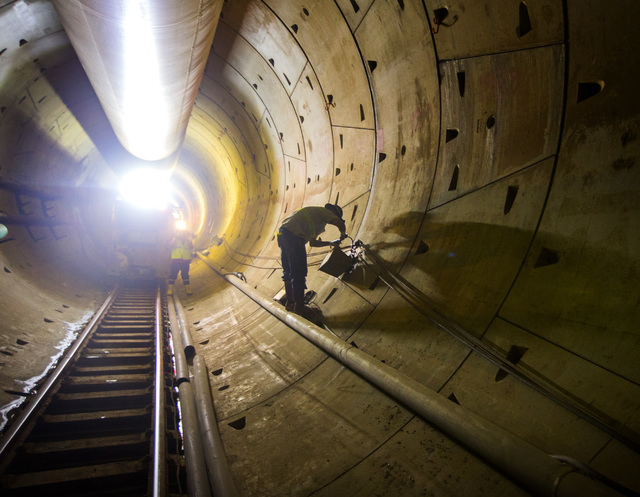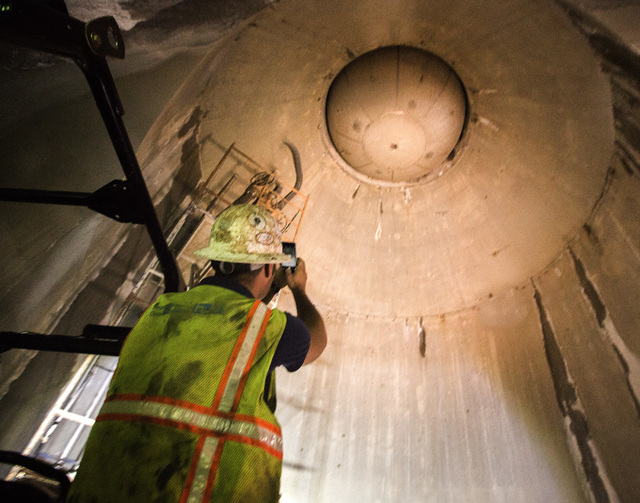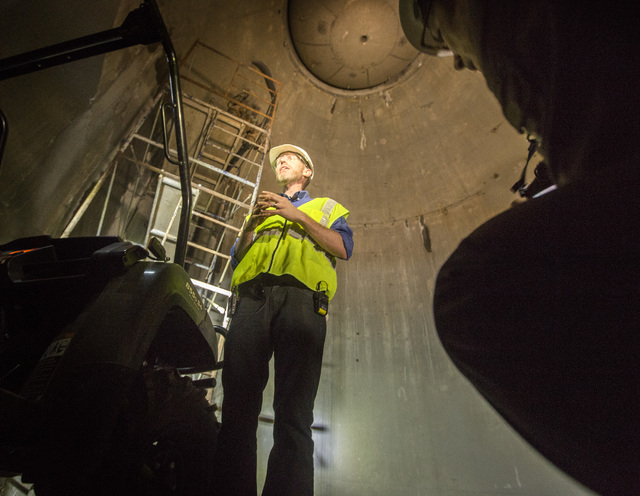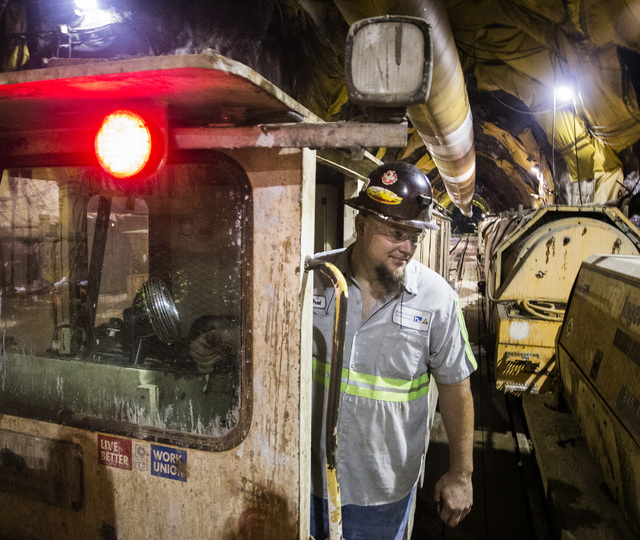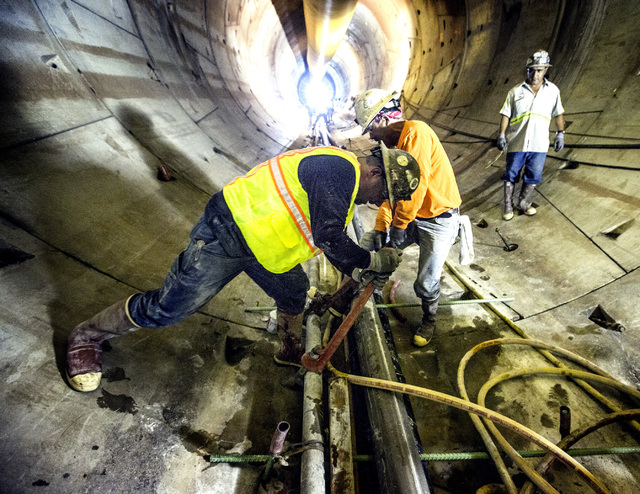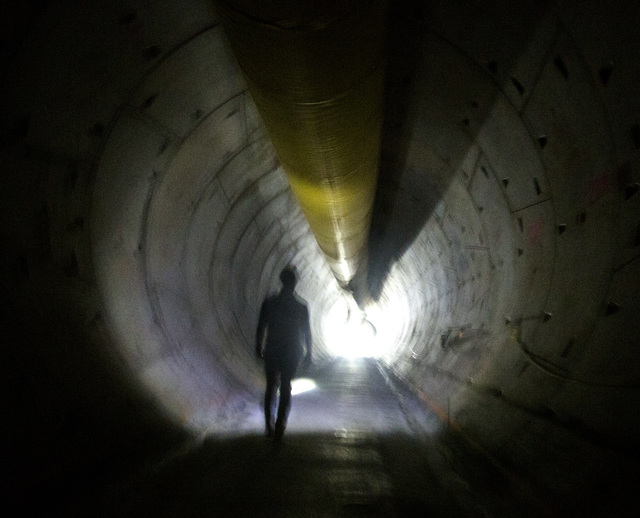They’re getting ready to pull the plug at the bottom of Lake Mead — PHOTOS
The business end of the Southern Nevada Water Authority’s new intake pipe at Lake Mead is a reinforced concrete vault that pokes up from the bottom of the reservoir, the last stop in a dark tunnel 3 miles long.
You can’t feel the weight of the lake 40 feet above your head, but it’s impossible not to think about it. A curved disc of stainless steel, 16 feet across and an inch and a half thick, is all that separates you from more than 3 trillion gallons of water that covers the vault to a depth of more than 300 feet.
Not to worry, says Jim Nickerson, project manager for this $817 million construction job.
“There isn’t a crane in the world that could lift that cap,” he says.
The weight of all that water is exactly what’s keeping the lid on the authority’s new intake tunnel. But that’s not the only pressure being placed on the project.
When it goes on line in September, the so-called third straw becomes a lifeline for the Las Vegas Valley, which draws 90 percent of its water supply through two existing intakes that will eventually stop working should the lake continue to shrink.
On Monday morning, the water authority led a small group on the first — and likely the last — media tour down the entire 3-mile tunnel to the intake structure, which is basically a concrete box the size of a Starbucks with walls 7 feet thick.
Soon no one will be able to make this trip.
Nickerson said all the work underground should be finished and construction equipment cleared away by August. Then workers will shut off the pumps that keep groundwater at bay, allowing the tunnel to gradually fill over two or three weeks. Once the water pressure in the tunnel equals the pressure around it, a crane floating on the surface of lake will lift the 19,000-pound stainless steel cap, allowing water to flow freely into the intake.
The big chunk of steel will go into storage, just in case they ever need to drain and inspect the tunnel.
Activity at the site has been constant since 2008, when Las Vegas Tunnel Constructors began excavating a 600-foot vertical access shaft on a peninsula at the western edge of Lake Mead. Since then, the project has been hit by a series of setbacks — and the death of one worker — that added more than two years and almost $40 million to the cost.
The work reached a major milestone in December, when the massive tunneling machine specially built for the job completed its 3-mile journey by punching into the 1,200-ton intake structure, which was built on shore and floated out onto the lake. In 2012 the 100-foot-tall intake structure was sunk into a hole blasted in the lake bed and secured with 12,000 cubic yards of special concrete pumped into place from a flotilla of cement trucks on barges.
Nickerson said that when the tunneling machine finally chewed its way into the side of the intake structure two years later, it missed its intended target by just 2 millimeters on one side and 3 millimeters on the other.
“There was a jobwide hole-through party,” he said.
The 1,500 ton, $25 million digger is now long gone. It was removed from the tunnel piece by piece over the first three months of the year, with most of it already shipped back to the factory in Germany.
But there is still work to be done.
On Monday, a crew was busy installing pipes along the tunnel floor that will allow the authority to collect samples and inject chemicals into the water at the mouth of the intake to keep quagga mussels from colonizing the new structure. Workers are also gradually removing construction infrastructure from the underground space, including the tracks for the small train that shuttles people to and from the end of the intake, a 20 minute trip each way.
The air in the tunnel is cooler now than it was when the tunneling machine was churning away, but conditions remain hot and humid in places thanks to thermally heated groundwater that still rains down at the access shaft.
Though the third straw should be finished and in service within the next four months, construction at the site is far from over. In the coming weeks, another contractor will start work nearby on a $600 million pumping station that will allow the new intake to draw water from the deepest part of the lake even if the surface drops another 175 feet to “dead pool,” leaving little more than a wide river too shallow for Hoover Dam to release water downstream.
That project, approved by the authority board in December along with a water rate increase to pay for it, is expected to be finished in 2020.
Contact Henry Brean at hbrean@reviewjournal.com or 702-383-0350. Find him on Twitter: @RefriedBrean



